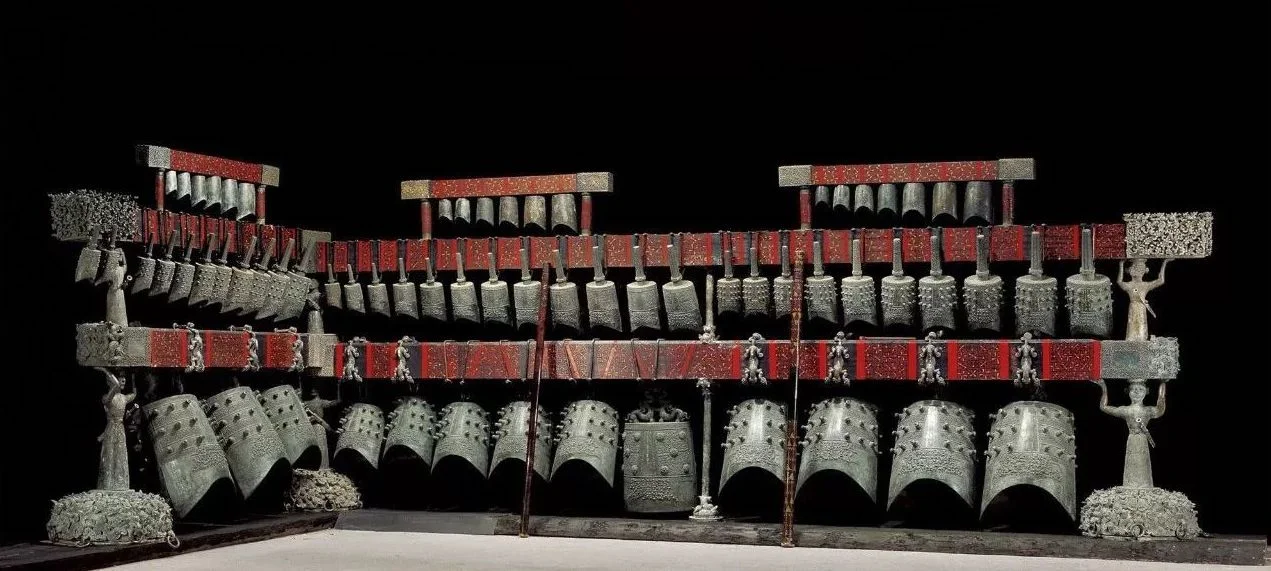Team: Meng Yuan, Mu He
Methods/Tools: Arduino, Visual Design
My Role: Experience Designer, User Researcher
Duration: Sept - Dec 2018
Problem Statement
For the museum exhibit project this semester, we decided to design an exhibition that display an ancient Chinese musical instrument. In many cultures around the world, music and instrument plays an essential role in societal, political and economic development, they symbolize historical progress and human wisdom during a particular period of time. However, most museum exhibition only displays artifacts behind the showcase, with lengthy contextual description, which is not only lack of interaction, but also difficult for visitors to draw connection between the artifact and the corresponding historical event. Thus, we decide to design an interactive user experience in the museum exhibition, combining the artifact with video, visual elements, which provides visitors with an unique experience to interact with the virtual instrument, be immersed into the exhibition, and take away personalized souvenirs.
About Bianzhong
Though there are lots of great traditional Chinese instrument to be introduced to the world, we decide to choose Bianzhong (ancient Chinese chime bell) as our major exhibit, because it is a well-known envoy of Chinese culture, with a perfect combination of technology, science and music.
Since its excavation in 1978, Bianzhong is under prior protection and currently on-display in Hubei Provincial Museum in Wuhan, China. As a national treasure, it has only been played 3 times since it was unearthed, the last time it was played is on the ceremony of Hong Kong Reunification in 1997. Thus, a great majority of visitors don’t get a chance to play the instrument or learn about the history behind it effectively through interaction.
Bianzhong of Marquis Yi of Zeng (a set of 65 bronze bells)
Why Bianzhong
The Bianzhong a perfect exhibit because it is relatively easy to learn how to play (strike with hammer), and the sound lasts long enough so that visitors have adequate time to adapt and find the right position to strike. Hence, we have got an inspiration from GarageBand in App Store China, which supports many traditional Chinese instruments like Erhu, Pipa, Guzheng, and we would like to build a similar interaction tool for worldwide visitors and music lovers, to play with the Bianzhong virtually.
Museum & Audience
Hubei Provincial Museum (Wuhan, China)
We plan to held the exhibition at Hubei Provincial Museum, where exhibits and artifacts is the largest in both quantity and category in China.
The exhibition opens to all people who are interested in ancient Chinese culture and musical instrument. It doesn’t require visitors to have any prior background knowledge about this topic. The interaction methods will help each visitor to learn about different aspect of the Bianzhong, as well as the history and culture it resembles.
User Interview
In order to understand our audiences and find out the current pain points in the museum experience, we interviewed 4 people who have been to the Hubei Provincial Museum. The interviewees are our relatives or friends who we know have such experience. The key findings are summarized below:
Storyboard
The installation shown in the image below enables visitors to simulate playing the Bianzhong and create their own songs with its original sound. And they will receive QR codes which recorded their songs and take home the printed QR codes with brochures. The exhibition installation will be consist of three parts: an instrument model that visitors can play, a computer which processes the inputs, plays the sound, generates QR code and a brochure visitors can take away.
Arduino+Processing
The computer will run a code snippet in Arduino, and handle the input and play the matching sound of Bianzhong with Processing. For each visitor, the computer will record the audio and store the audio in a new generated QR code.
The interactive exhibition we planned to create was actually a system consisting of inputs and outputs. In our research, we found that the combination of Arduino+Processing is widely used in interactive installations. It is one way that we can prototype our exhibition project.
Final Video
Base on the video script we drafted, our final video includes three main parts. The first part is about Bianzhong’s manufacturing process, basic specs, musical features. Then, a natural transition will be made between introductions and its performance scene in both ancient and modern time, as well as its important role played in national events and culture exchanges. Last but not the least, a short demo will be shown of how our prototype will work in the exhibition.
Brochure
On the brochure, introductions are provided about the Bianzhong as well as Chinese ancient musical history and culture. There is also a blank space left for the QR code which records the audio a visitor has created. Once the visitor just played a part of music, it will be automatically be saved and printed out, leaving out a blank space at the top of the middle page. In this way, the brochure becomes unique for each visitor, which can be taken home as a souvenir, and play back the sound track of Bianzhong by extracting the QR code at anytime, in anywhere.
Tri-fold Brochure Designed for Bianzhong Exhibition
Final Prototype
As for the model, we decide to make a paper cardboard Bianzhong(shown in image at the bottom left). We select an image of partial Bianzhong, which is shown on paper and screen. We connected force sensor with wires connecting to the Arduino Uno Controller Board at one end, and sticked to the back of corresponding bell. In this way, once user presses a particular bell to play a tone, the position being pressed will be highlighted on the screen, and the sound will played(shown in image at the bottom right).
Before tapping on the virtual Bianzhong
After tapping on the virtual Bianzhong
Demo of Final Interaction in Bianzhong Museum Exhibition
Reflection & Takeaways
The final design workbook can be accessed at this link.









